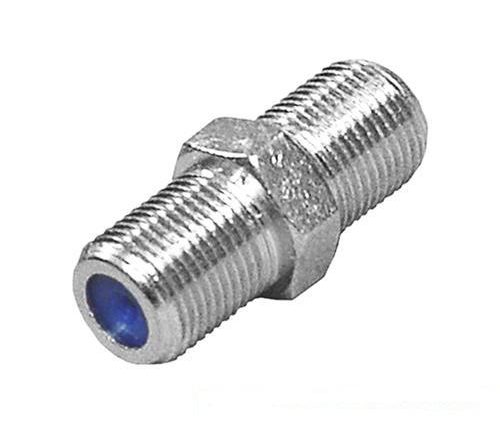I hardly need to introduce you to the lowly F-connector. You probably have a few dozen cables, devices, and connectors in your home with this connector. It’s used for satellite, antenna, and cellular booster signals, and you’ll also find it occasionally used for FM radio, baseband video, and car radios. It’s a very versatile little connector.
A little bit of history
The F connector itself seems to date back to the early 1950s when engineers at Jerrold were doing experimentation on early forms of cable TV. They needed a cable and connector that were inexpensive enough to be used throughout the home, that was easy to connect and disconnect but stayed connected, and most importantly which worked well with the frequencies they were expecting to use.
The F connector may have been named for the wide range of frequencies that it can carry– F for frequency is what I’m thinking here. Other connectors invented on those days often carried the initials of their inventors. For example the N connector used in many 50-ohm cables at the time was named for Paul Neill, and its descendant the BNC cable was created by combining an N connector with a C connector (invented by Carl Concelman.)
The tech of the F
The F connector is extremely good at what it does. It allows for fairly thin cables to be used, and incorporates the white “dielectric” of the actual cable into the connector, which saves money and gives a better connection. Its twist-on nature means it stays secure and relatively waterproof but still shields the inner copper center from a lot of stray interference.
Unlike some connectors out there, the F connector is well-suited for a very wide range of frequencies. It’s routinely used for everything from 50 to 3,000 MHz. Other connectors like RCA and SMA are used only for much narrower frequencies. Yes, it really does matter what connector you use, because using the wrong one can limit the strength or quality of the signal that travels through it.
The way F connectors are used
The industry originally just used F connector just for cable TV and antenna use. Since then satellite, cellular boosters and other broadcast media use it as well. Industrial TV distribution still sometimes uses the BNC connector but F connectors are so common that you’ll see them used there. You won’t find other types of connectors in the home anymore. For example think about the UHF connector. You originally found these in industrial video. Commercial installs still use the N connector especially in cell boosters. You don’t see these in home use. Instead, you see F connectors. There’s a reason. Xonsumers like having one kind of cable and one kind of connector for all their devices.
You’ll find F connectors exclusively with 75-ohm cable. While it is possible to put an F connector on other types of cables, the results range from poor to utterly unusable. That’s fine, because 75-ohm RG6 cable is the most common, and the least expensive, pro-grade cable used today. The cable and the connector have become so successful because they are so versatile, and now that practically everything you care about has an F connector, that’s not likely to change.
Get the cable you need
You can find F-connectors, cables with F connectors, and a whole lot else in one place. What’s that one place? Check out Solid Signal now. You’ll find thousands of parts to help you live your best digital life. Having trouble finding what you need? Call us! You can reach us during East Coast business hours. The number is 888-233-7563. If it’s after hours, fill out the form below. We’ll get back to you, usually within one business day.

